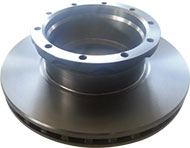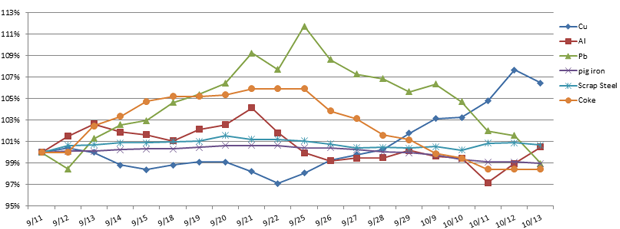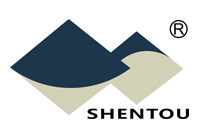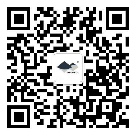CHINA AUTOMOTIVE SUPPLIER QUALITY MANAGEMENT BRIEFING
10/05/2017
Vol. 1, No. 8, October 2017

① QUALITY CHALLENGES & SOLUTIONS WITH YOUR SUPPLIERS IN CHINA

Many professional international buyers require supplier audits when they choose their aftermarket suppliers in China. Normally they would conduct onsite process audits based on the manufacturing procedures specified in the control plans submitted by the suppliers. Quite often, the process and content as described in the control plans are either not the same as the documents or methodologies checked onsite, or the control plans are not accurately implemented.
The control plan is a pre-determined and documented description of the controlled product and process. It is also called the quality plan which specifies how to control a component or production process of a product or the various special production features such as the key, special, and general characteristics. It is also a document of control method that describes the production process flow to ensure the product quality.
There are three types of control plans, covering the phases of prototype, pre-launch, and production.
While OEM suppliers have to strictly follow the 3-phased control plans, aftermarket suppliers usually have the production control plans only, if any. And even this control plan is mostly prepared upon specific customer requirement and it usually is a general plan, rather than one for every product the customer purchases. With the unique nature of aftermarket procurement of small quantities with multiple items, the implementation of control plans in production is understandably difficult.
Compared to the OEM process, the production considerations of products for aftermarket, for example product development, product or process change, are not as strict. Aftermarket customers are typically also not as well-versed in technologies or qualities as their OEM counterparts, so they are usually not able to raise specific quality requirements to their aftermarket suppliers. Consequently, the control plans are usually not strictly followed or neglected all together by the suppliers.
In the cases where the aftermarket suppliers do have control plans in place, it is not uncommon to see inconsistence between the plans and the onsite implementation.
Usually this is because the control plans are made up when customers request audits. The engineers would rush through the preparation of a control plan in the office that is based on a different control plan or a plan used by other companies. The product process specifications and the control method definitions are therefore usually weak, and they are not validated onsite. So when auditors ask for audit evidences during auditing, such as records or statements of product process characteristics, specifications, and control methods, the documentations provided onsite are not consistent with the actual control requirements, or the plans are not accurately followed.
Unfortunately, for many aftermarket suppliers the control plans are just for dealing with audits by customers, not for guiding and regulating the production activities.
By Felix SS YUAN
② CRITICAL FAILURE MODES / QUALITY CONTROL POINTS IN FOCUS

Lightweight Brake Discs
Lightweight brake disc refers to the brake disc lighter than the OEM parts.
When the OEM parts are initially designed, the OEM factories always require a high factor of safety which sometimes results in a surplus for customers with a lower performance requirement, for example the aftermarket applications. In the case of brake discs, it’s possible to reduce some amount of product weight without affecting the use and performance.
The concept of lightweight brake disc is different from automotive lightweighting, which usually refers to achieving vehicle weight reduction through the use of new materials, new technologies or optimized designs without compromising the strength and safety of the vehicle.
The lightweight brake disc that is the most widely used in the aftermarket industry is Mercedes Benz Actros part number 9424212112. The weight of the OEM part is approximately 34.5Kg. For the aftermarket, however, the weight is generally reduced to either 33.6kg or 30kg. Currently about 80% of this discs available on the aftermarket is 33.6Kg, and 15% is 30Kg.
The weight reduction of these brake discs are usually achieved through widening the air vent or cutting off some materials on the sustaining or flange parts.
Although the weight of the brake disc has been reduced, the requirement for the material should remain the same or even higher, as the lightweight product must still meet the same requirement as the OEM parts. So it requires more stringent inspection and testing during the production process. For example, the inspection of the casting process should be enhanced and the machining techniques should be optimized.
Many international customers aware of the weight-reduced product situation in China would clearly specify the product weight in the contracts to prevent the suppliers from delivering wrong goods or simply cutting corners in production.
When dealing with weight-reduced products such as brake discs, it is also important to remember that while the production process should be monitored, the application environment of these products should also be considered.
By Andy RS Zhang
③ KEY CONCEPTS & PRACTICES IN SUPPLIER QUALITY MANAGEMENT
 Business Social Compliance Initiative (BSCI) is a monitoring system to improve social compliance in global supplier chains. Its primary objective is to promote socially responsible sourcing.
Business Social Compliance Initiative (BSCI) is a monitoring system to improve social compliance in global supplier chains. Its primary objective is to promote socially responsible sourcing.
BSCI was launched in 2003 by Foreign Trade Association (FTA), a Brussels-based business association of global commerce promoting the values of international trade and sustainable supply chains.
A BSCI audit is aimed at companies that are active in the international markets with global supply chains. As such, the supplier BSCI audit looks at the social compliance of the overseas suppliers in the areas of fair working conditions, occupational safety, and environmentally-friendly production.
BSCI recognizes SA8000, the international social certification standards for factories and organizations, as 100% equivalent, as the SA8000 contains the full requirements of the BSCI Code of Conduct.
As more and more international companies request BSCI audits on their Chinese suppliers, they have come across many social compliance challenges, especially with the issues of wages & benefits, working hours, record keeping, and safety.
④ CHINA INDUSTRY & MARKET UPDATE
Cost of raw materials:

Exchange rates:
![]() USD/RMB: 1: 6.63
USD/RMB: 1: 6.63
![]() EUR/RMB: 1:7.79
EUR/RMB: 1:7.79
![]() RUB/RMB: 1:0.12
RUB/RMB: 1:0.12
October 2017
The above information is for reference only
⑤ IT HELPS TO KNOW...
One of the most important industry events of 2017, the Automechanika Shanghai, will take place later this month:

Automechanika Shanghai 2017
Date:Nov. 29 – Dec. 2, 2017
Venue:National Exhibition and Convention Center, Shanghai, China.
Organizer:China National Machinery Industry Corporation
Product focus:Parts & Components, Repair & Maintenance, Tyres & Service, Accessories & Tuning.
Automechanika Shanghai has evolved into a global automotive industry platform that integrates information exchange, social networking, promotion, marketing and trade integration. This year the Automechanika Shanghai exhibition area will reach 330,000 square meters, and it is expected to attract more than 5,900 exhibitors from around the world and 120,000 high-quality buyers and professional visitors.
As before, Shentou will be exhibiting at #3E043.
SHENTOU SUPPLY CHAIN MANAGEMENT CO. LTD. is a Shenzhen, China, based company serving international automotive clients in the implementation of their China strategies and programs. CHINA AUTOMOTIVE SUPPLIER QUALITY MANAGEMENT BRIEFING is a bi-monthly newsletter published by Shentou to address the specific and unique quality challenges and concerns international automotive companies face with suppliers in China. Comments are welcome at qms@shentou.com. Click here to subscribe.

